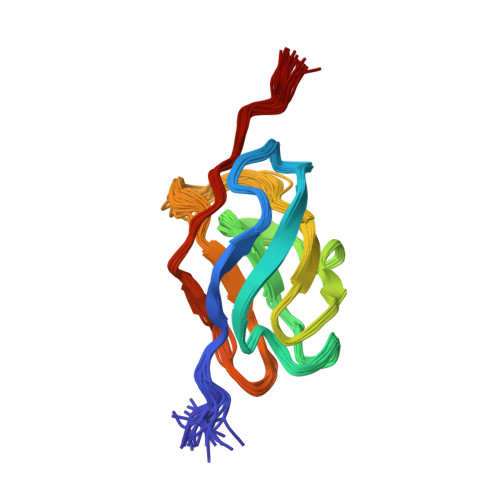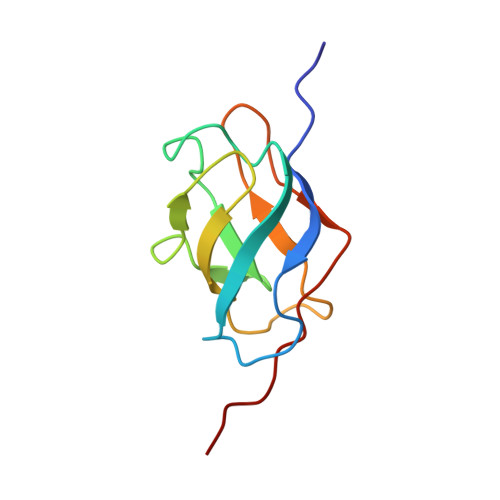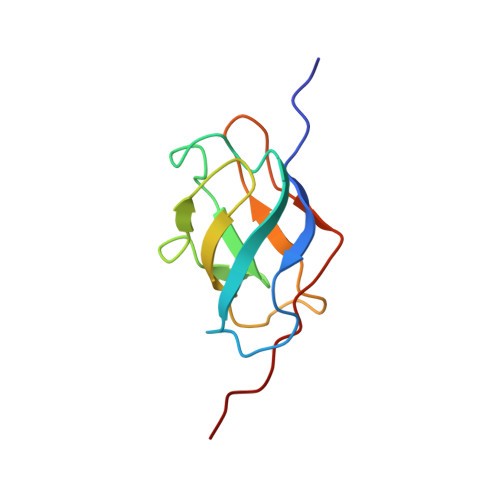Structure of the GTPase-binding domain of Sec5 and elucidation of its Ral binding site.
Mott, H.R., Nietlispach, D., Hopkins, L.J., Mirey, G., Camonis, J.H., Owen, D.(2003) J Biological Chem 278: 17053-17059
- PubMed: 12624092
- DOI: https://doi.org/10.1074/jbc.M300155200
- Primary Citation of Related Structures:
1HK6 - PubMed Abstract:
The exocyst complex is involved in the final stages of exocytosis, when vesicles are targeted to the plasma membrane and dock. The regulation of exocytosis is vital for a number of processes, for example, cell polarity, embryogenesis, and neuronal growth formation. Regulation of the exocyst complex in mammals was recently shown to be dependent upon binding of the small G protein, Ral, to Sec5, a central component of the exocyst. This interaction is thought to be necessary for anchoring the exocyst to secretory vesicles. We have determined the structure of the Ral-binding domain of Sec5 and shown that it adopts a fold that has not been observed in a G protein effector before. This fold belongs to the immunoglobulin superfamily in a subclass known as IPT domains. We have mapped the Ral binding site on this domain and found that it overlaps with protein-protein interaction sites on other IPT domains but that it is completely different from the G protein-geranyl-geranyl interaction face of the Ig-like domain of the Rho guanine nucleotide dissociation inhibitor. This mapping, along with available site-directed mutagenesis data, allows us to predict how Ral and Sec5 may interact.
Organizational Affiliation:
Department of Biochemistry, University of Cambridge, 80, Tennis Court Road, Cambridge CB2 1GA, United Kingdom. mott@bio.cam.ac.uk


















